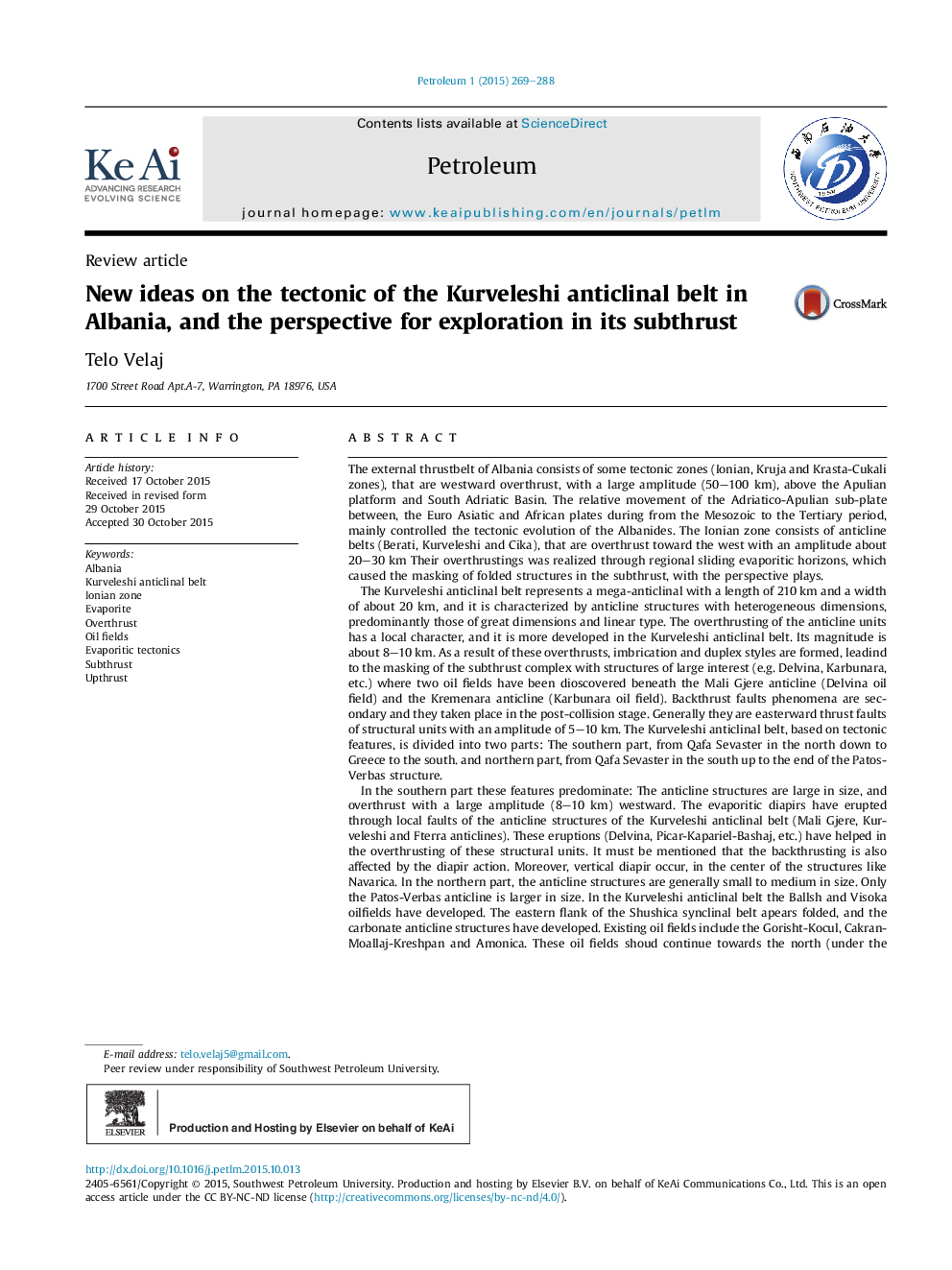| کد مقاله | کد نشریه | سال انتشار | مقاله انگلیسی | نسخه تمام متن |
|---|---|---|---|---|
| 852862 | 909456 | 2015 | 20 صفحه PDF | دانلود رایگان |
The external thrustbelt of Albania consists of some tectonic zones (Ionian, Kruja and Krasta-Cukali zones), that are westward overthrust, with a large amplitude (50–100 km), above the Apulian platform and South Adriatic Basin. The relative movement of the Adriatico-Apulian sub-plate between, the Euro Asiatic and African plates during from the Mesozoic to the Tertiary period, mainly controlled the tectonic evolution of the Albanides. The Ionian zone consists of anticline belts (Berati, Kurveleshi and Cika), that are overthrust toward the west with an amplitude about 20–30 km Their overthrustings was realized through regional sliding evaporitic horizons, which caused the masking of folded structures in the subthrust, with the perspective plays.The Kurveleshi anticlinal belt represents a mega-anticlinal with a length of 210 km and a width of about 20 km, and it is characterized by anticline structures with heterogeneous dimensions, predominantly those of great dimensions and linear type. The overthrusting of the anticline units has a local character, and it is more developed in the Kurveleshi anticlinal belt. Its magnitude is about 8–10 km. As a result of these overthrusts, imbrication and duplex styles are formed, leadind to the masking of the subthrust complex with structures of large interest (e.g. Delvina, Karbunara, etc.) where two oil fields have been dioscovered beneath the Mali Gjere anticline (Delvina oil field) and the Kremenara anticline (Karbunara oil field). Backthrust faults phenomena are secondary and they taken place in the post-collision stage. Generally they are easterward thrust faults of structural units with an amplitude of 5–10 km. The Kurveleshi anticlinal belt, based on tectonic features, is divided into two parts: The southern part, from Qafa Sevaster in the north down to Greece to the south. and northern part, from Qafa Sevaster in the south up to the end of the Patos-Verbas structure.In the southern part these features predominate: The anticline structures are large in size, and overthrust with a large amplitude (8–10 km) westward. The evaporitic diapirs have erupted through local faults of the anticline structures of the Kurveleshi anticlinal belt (Mali Gjere, Kurveleshi and Fterra anticlines). These eruptions (Delvina, Picar-Kapariel-Bashaj, etc.) have helped in the overthrusting of these structural units. It must be mentioned that the backthrusting is also affected by the diapir action. Moreover, vertical diapir occur, in the center of the structures like Navarica. In the northern part, the anticline structures are generally small to medium in size. Only the Patos-Verbas anticline is larger in size. In the Kurveleshi anticlinal belt the Ballsh and Visoka oilfields have developed. The eastern flank of the Shushica synclinal belt apears folded, and the carbonate anticline structures have developed. Existing oil fields include the Gorisht-Kocul, Cakran-Moallaj-Kreshpan and Amonica. These oil fields shoud continue towards the north (under the overthrust of the Patos-Verbas antcline) and in the south (under the regional ovethrust of the Kuervelesh anticlinal belt).
Journal: Petroleum - Volume 1, Issue 4, December 2015, Pages 269–288
